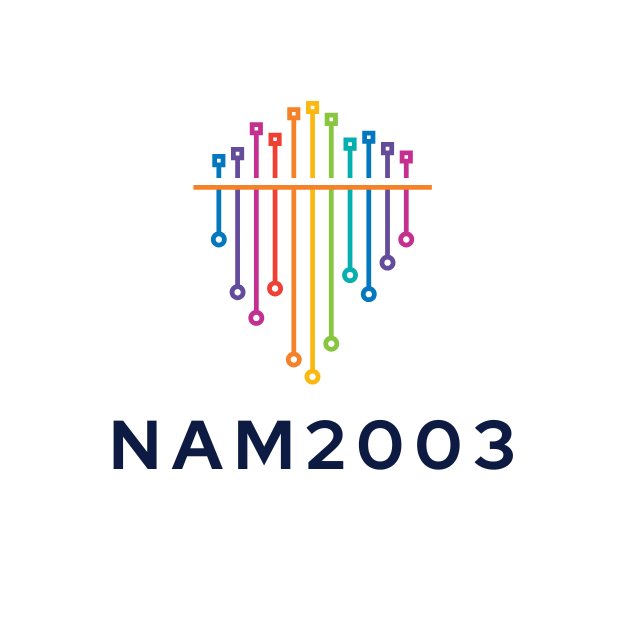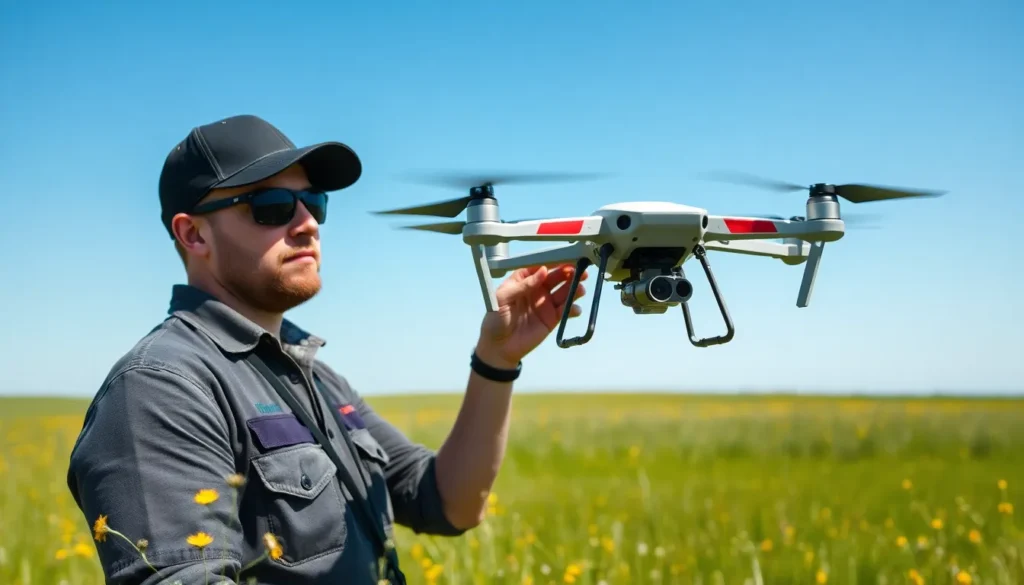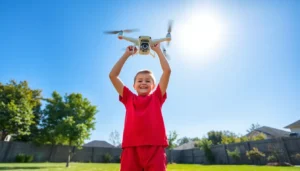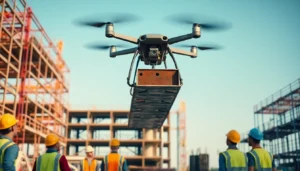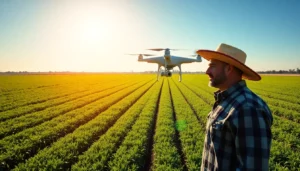Table of Contents
ToggleDrones with multiple rotors are taking the skies by storm, and for good reason. These flying marvels aren’t just for tech enthusiasts or hobbyists; they’re revolutionizing industries from agriculture to filmmaking. Imagine a gadget that can hover, zip, and even deliver snacks to your doorstep—what’s not to love?
Overview of Drones With Multiple Rotors
Drones with multiple rotors feature configurations like quadcopters, hexacopters, and octocopters. Each design offers specific advantages in stability and lifting capacity. Quadcopters consist of four rotors, providing excellent maneuverability and efficiency for lightweight tasks. Hexacopters, with six rotors, enhance payload capabilities, making them suitable for carrying larger equipment or cameras. Octocopters, utilizing eight rotors, excel in stability and redundancy, providing a backup in case of rotor failure.
Applications of multi-rotor drones expand across numerous industries. In agriculture, these drones facilitate crop monitoring and precision spraying, optimizing yields. Filmmakers appreciate their ability to capture high-quality aerial footage with stability, significantly improving production value. Emergency response teams use drones to survey disaster areas, allowing for rapid assessment and coordination of relief efforts.
Key components of multi-rotor drones include electronic speed controllers, flight controllers, and battery systems. Electronic speed controllers regulate motor speed, ensuring smooth operation and precise handling. Flight controllers act as the brain of the drone, processing sensor data to maintain balance and stability during flight. Battery systems determine flight time and payload capacity, with lithium polymer batteries commonly providing optimal performance.
The growing accessibility of drone technology also contributes to their popularity. Affordability continues to decrease, allowing hobbyists and professionals alike to invest in multi-rotor drones. Additionally, advancements in battery life and camera technology enhance their functionality across different uses, attracting diverse user bases. As industries continue to adopt these tools, the market for multi-rotor drones is positioned for future growth and innovation.
Key Features of Multirotor Drones
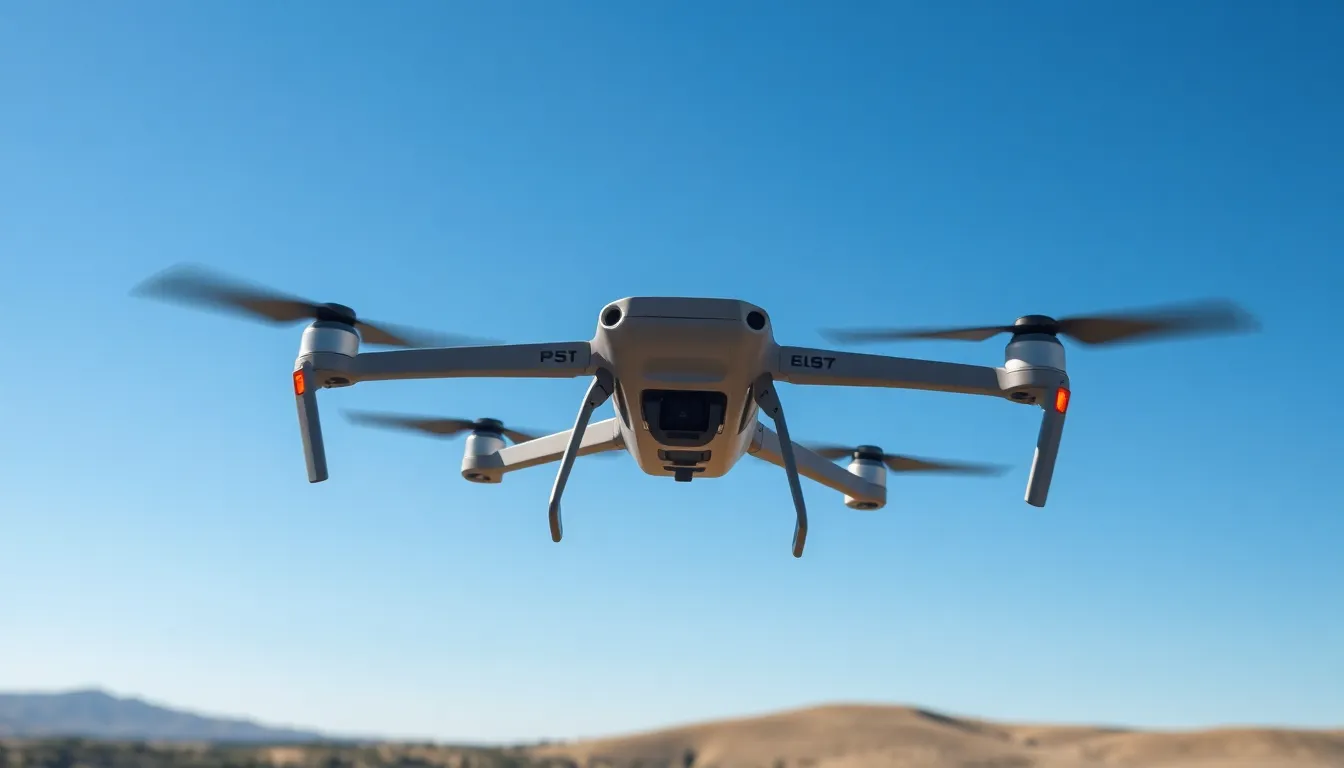
Multirotor drones exhibit distinctive characteristics that enhance their functionality and versatility. Their designs range from various configurations, each suited for different applications.
Types of Multirotor Drones
Quadcopters consist of four rotors, making them popular for recreational use and photography. Hexacopters, with six rotors, provide improved stability and increased lifting capacity, beneficial in commercial applications. Octocopters, featuring eight rotors, excel at carrying heavy payloads and offer redundancy, ensuring safer flights in critical scenarios.
Advantages of Multiple Rotors
Multiple rotors enhance stability and maneuverability during flight. They allow for vertical takeoff and landing, making them suitable for confined spaces. Increased rotor count translates to better load distribution, enabling drones to carry additional equipment such as cameras or sensors. Reduced risk of failure occurs thanks to rotor redundancy. Pilots gain better control, particularly in windy conditions, ensuring smoother operation.
Applications of Drones With Multiple Rotors
Drones with multiple rotors serve diverse applications across various sectors, enhancing efficiency and productivity. They play significant roles in both commercial and recreational areas.
Commercial Uses
Multi-rotor drones excel in commercial sectors like agriculture and filmmaking. In agriculture, they monitor crop health through precise aerial imagery, aiding farmers in data-driven decisions. Filmmakers capture stunning aerial footage, enhancing visual narratives and storytelling. Infrastructure inspection benefits from their capability to perform detailed evaluations, identifying maintenance needs without disrupting operations. Logistics companies leverage drones for package delivery, reducing transportation times and costs. Emergency response teams utilize these drones for disaster assessments, improving situational awareness in critical scenarios.
Recreational Uses
In recreational contexts, drones with multiple rotors attract hobbyists and enthusiasts alike. Photography and videography offer exciting opportunities for capturing breathtaking landscapes from unique perspectives. Racing circuits feature competitive events where skilled pilots maneuver drones through challenging courses. Community events often include drone demonstrations, showcasing their technology and capabilities. Educators harness drones for STEM education, inspiring students through hands-on learning experiences in aerospace technology. Creative individuals explore potential artistic expressions, integrating drones into their craft.
Future Trends in Multirotor Drone Technology
Emerging technologies are reshaping multirotor drones, enhancing their applications and capabilities. Artificial intelligence integration is one significant trend. AI algorithms enable drones to analyze data in real-time, allowing for automated decision-making during flights.
Another notable development revolves around improved battery technology. Efficient batteries extend flight duration, accommodating longer missions for tasks such as aerial surveys or emergency deliveries. Increased range provides operators with more flexibility in the field.
The miniaturization of sensors also plays a crucial role. Advanced sensors now fit compactly, providing enhanced imaging and data collection capabilities, which significantly benefits industries like agriculture and public safety. Improved sensors increase accuracy and effectiveness, yielding better outcomes in various applications.
Urban air mobility is another exciting prospect on the horizon. Multirotor drones hold the potential to transport passengers and cargo in congested city environments, paving the way for air taxis and innovative logistics solutions. This evolution signals an exciting shift in urban transportation dynamics.
Regulatory improvements and standardization are expected to emerge alongside these technological advancements. Establishing clearer regulations can facilitate safer operations and encourage broader adoption across industries. Stakeholders are increasingly recognizing the need for frameworks that support safe drone use.
Sustainability also influences future drone designs. Developers are focusing on eco-friendly materials and energy-efficient systems, aligning their products with global sustainability efforts. Adoption of green technologies in drone production reflects a commitment to environmental responsibility.
Collaboration with other technologies offers further opportunities. Integration with IoT devices enhances connectivity, enabling efficient data sharing and real-time monitoring. Such advancements hold promise for creating smarter, more interconnected operational environments across sectors.
The evolution of multi-rotor drones marks a significant shift in how various industries operate. Their versatility and efficiency make them indispensable tools for tasks ranging from agriculture to filmmaking. With advancements in technology and increasing affordability, these drones are more accessible than ever.
As they continue to integrate artificial intelligence and improved battery life, the potential applications will only expand. The future looks bright for multi-rotor drones as they pave the way for innovative solutions in urban air mobility and beyond. Embracing this technology will undoubtedly reshape how businesses and individuals approach their needs in the coming years.
